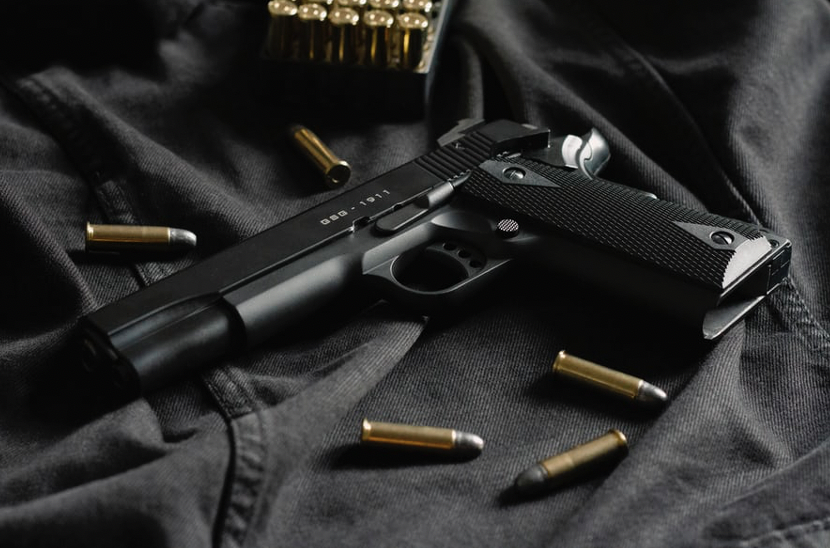By Matthew Naum, Staff Writer

When it comes to scientific analysis, the validity of one’s results depends on the research and rigor that went into developing the methods used to produce those results. If methods are used that lack a strong scientific underpinning and consistency, then results produced by those methods may be flawed. A landmark 2009 report by the National Academy of Sciences (NAS) found that this issue was ubiquitous in the forensic sciences in the United States, including that of firearm and tool mark science. From a lack of articulable standards interpreting evidence to a lack of scientific studies supporting the accuracy of the methodology, the report cast aspersions on firearm and toolmark science.[1] This faulty science has resulted in wrongful convictions and presents a continued risk of wrongful conviction and imprisonment without judicial or legislative solutions.
During the manufacturing of a firearm, the machining process leaves unique, sometimes microscopic, markings on the interior and exterior of each firearm.[2] The tool marks on the interior of the firearm then leave corresponding markings on the brass cartridge case and lead bullets during the firearm’s mechanical processes of firing and extraction.[3] Forensic examiners attempt to match the tool marks to a corresponding tool or firearm and assert that only that tool could have made those exact tool marks.[4] This match is achieved through visual analysis by the examiner.[5]
However due to a lack of sufficient studies on variability between tools and guns, there is no specification of how many points of similarity are required for a given level of confidence in results of analysis.[6] As a result, examiners are often required to draw extensively on their own experience.[7] The subjectivity involved in this analysis leaves it open to error, and those errors can lead to wrongful conviction and take decades to correct.
Illinois is currently the only state that allows defendants to access the Integrated Ballistics Identification System (IBIS) to retest evidence.[8] IBIS is a database that allows forensic examiners to upload and search images of tool mark and firearm evidence from around the country for comparison and matching.[9] This became integral in one particular case of wrongful conviction based on faulty toolmark analysis. Patrick Pursley spent 23 years in in Illinois prison for a 1993 murder before being acquitted at a new trial in 2019.[10] The only physical evidence matching Pursely to the crime was a firearm found in his possession. The prosecution presented expert testimony from a toolmark examiner who said that the bullets and cartridge casings recovered from the crime scene could only have come from Pursely’s gun.[11]Pursely was finally granted a new hearing in 2016, and three examiners testified that the toolmark evidence was inconclusive at best and not a match to Pursely’s gun at worst.[12] Pursely was later acquitted at a retrial.[13]
While the 2009 NAS forensic report cast doubt on firearm and toolmark analysis, the forensic community has responded positively and made efforts to address the issues. In 2015, The Center for Statistics and Applications in Forensic Evidence (CSAFE) was established and partnered with the National Institute of Standards and Technology to conduct more research and infuse more statistical and rigorous standards into forensic practice.[14] In 2019, the American Statistical Association released guidelines for statements and opinions from forensic scientists discussing evidence.[15]There has even been more research and funding into better ways to match toolmarks using 3D topographical technology.[16] These are all positive steps taken to instill confidence back into forensic evidence. However only 7 states currently have legislation specifically allowing post-conviction relief based on discredited forensic evidence.[17] As the forensic community presses forward, more states should follow Illinois and allow post-conviction relief for retesting evidence and challenging discredited scientific evidence. According to the National Registry of Exonerations, false or misleading forensic evidence was a contributing factor in 24% of all wrongful convictions nationally.[18] Without judicial or legislative involvement, dozens or hundreds of people are likely to remain imprisoned even as forensic science moves to learn from the past.
[1] Strengthening Forensic Science: A Path Forward, https://www.ojp.gov/pdffiles1/nij/grants/228091.pdf
[2] The Science Behind Firearm and Tool Mark Examination, https://nij.ojp.gov/topics/articles/science-behind-firearm-and-tool-mark-examination
[3] Ibid.
[4] https://www.ojp.gov/pdffiles1/nij/grants/228091.pdf
[5] Ibid.
[6] Ibid.
[7] Ibid.
[8] https://apnews.com/article/59911df1c6054015b2dfc0adc2d230b2
[9] https://youth.gov/content/integrated-ballistics-identification-system-ibis
[10] https://apnews.com/article/59911df1c6054015b2dfc0adc2d230b2
[11] Ibid.
[12] https://www.law.umich.edu/special/exoneration/Pages/casedetail.aspx?caseid=5487
[13] Ibid.
[14] https://forensicstats.org/about/
[15] https://www.amstat.org/asa/files/pdfs/POL-ForensicScience.pdf
[16] https://nij.ojp.gov/funding/awards/djo-nij-20-ro-0004
[17] https://innocenceproject.org/overturning-wrongful-convictions-involving-flawed-forensics/
[18] https://www.law.umich.edu/special/exoneration/Pages/browse.aspx?View={B8342AE7-6520-4A32-8A06-4B326208BAF8}&FilterField1=Contributing_x0020_Factors_x0020&FilterValue1=False%20or%20Misleading%20Forensic%20Evidence